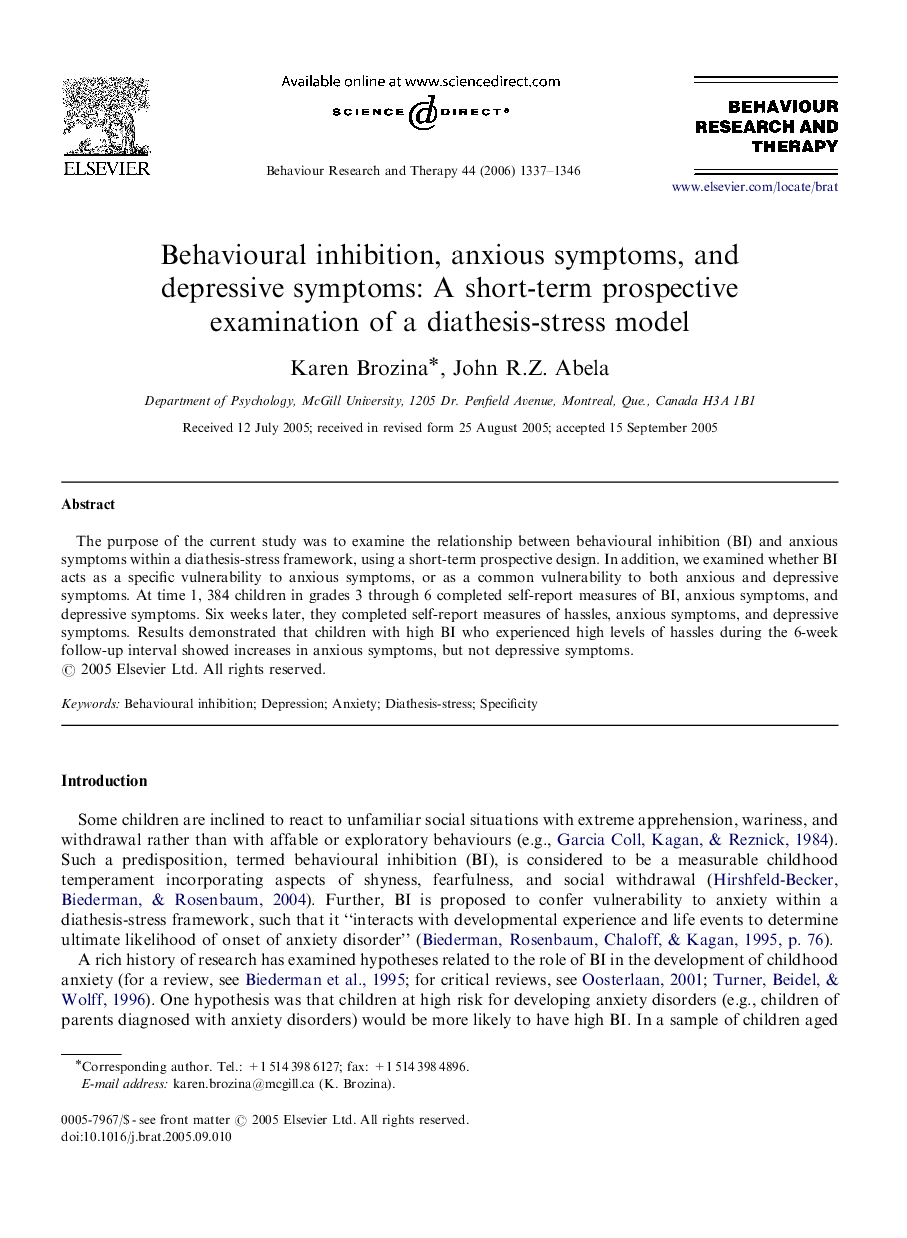| Article ID | Journal | Published Year | Pages | File Type |
|---|---|---|---|---|
| 902554 | Behaviour Research and Therapy | 2006 | 10 Pages |
The purpose of the current study was to examine the relationship between behavioural inhibition (BI) and anxious symptoms within a diathesis-stress framework, using a short-term prospective design. In addition, we examined whether BI acts as a specific vulnerability to anxious symptoms, or as a common vulnerability to both anxious and depressive symptoms. At time 1, 384 children in grades 3 through 6 completed self-report measures of BI, anxious symptoms, and depressive symptoms. Six weeks later, they completed self-report measures of hassles, anxious symptoms, and depressive symptoms. Results demonstrated that children with high BI who experienced high levels of hassles during the 6-week follow-up interval showed increases in anxious symptoms, but not depressive symptoms.
